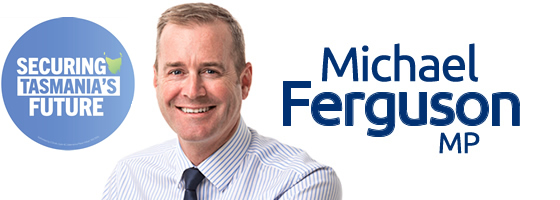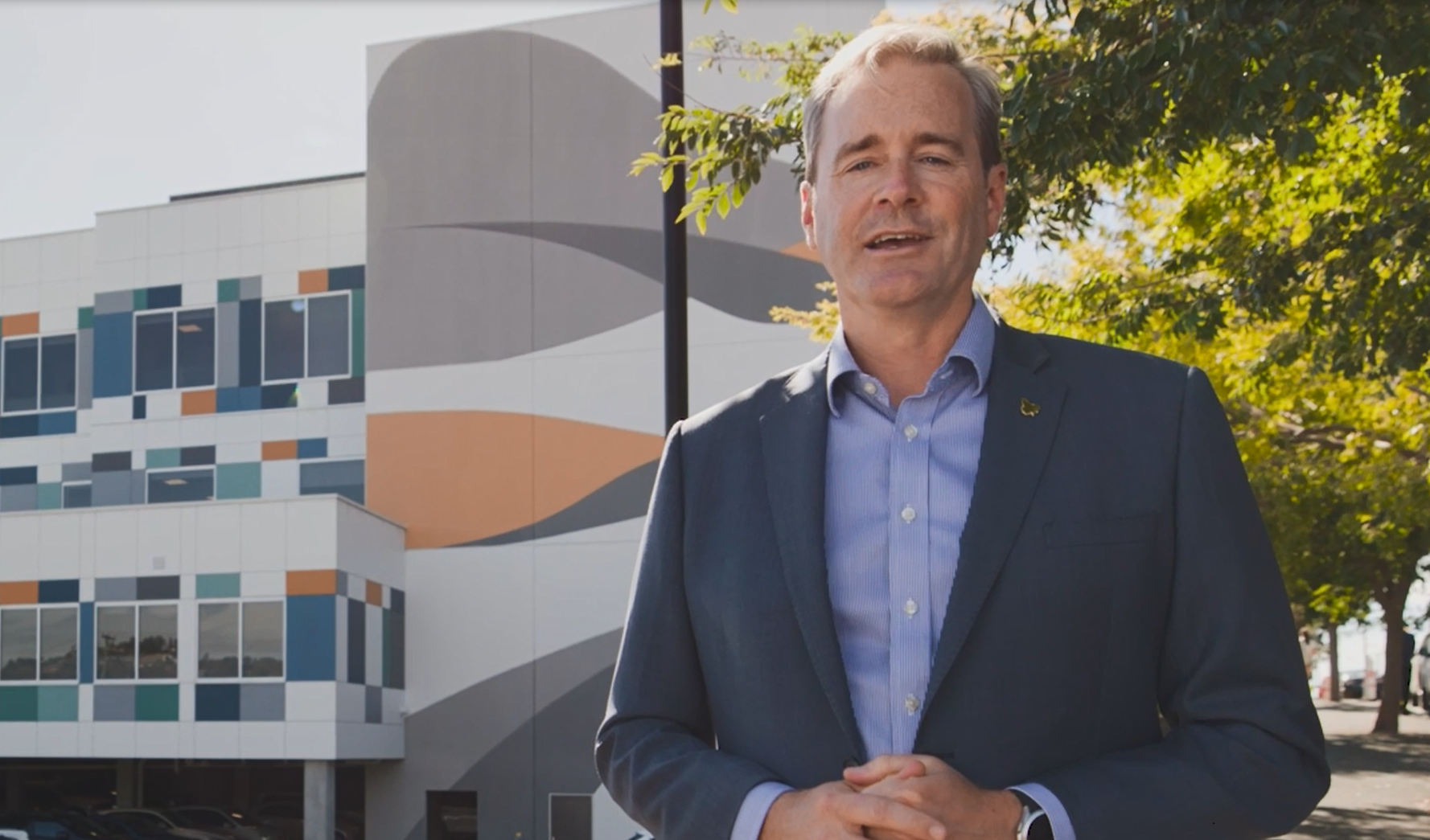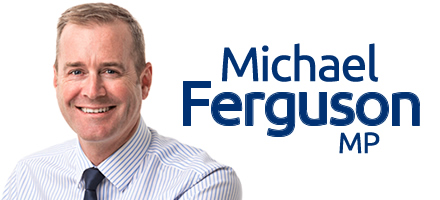Building a better health system is the cornerstone of our 2030 Strong Plan for Tasmania’s future.
Over the past 10 years we have invested more than $1 billion in new hospitals and health infrastructure and will spend $1 billion more over the next decade to keep building a better health system for all Tasmanians.
KEEP BUILDING THE LAUNCESTON GENERAL HOSPITAL
Since our election in 2014, we have been steadily rebuilding the LGH. In 2022, we released the next phase of this project with a 10-year, $580 million redevelopment program.
A re-elected majority Liberal Government will build on this, including:
- Doubling the size of the Emergency Department as part of a new $53.5 million expansion, ensuring the ED has additional capacity to meet current and future demand. The expansion will include a new and improved Emergency Medical Unit for patients to be discharged in less than 24 hours, and a new and improved Acute Medical Unit for patients who need a couple of days of admission, and an expanded fast track and waiting area.
Additional works under the LGH redevelopment include:
- A new multi-storey car park on the corner of Howick and Charles Streets to cater for additional services and demand at the LGH to commence in late 2024.
- A new $16 million state-of-the-art rooftop helipad, providing efficient patient transfer to the Emergency Department, ICU and theatres – fully funded and to be completed by mid-2024.
In addition, we will begin building a new purpose-built mental health precinct to replace the ageing Northside Unit. This project is already planned and fully funded and will be constructed over the next four years.
A NEW $120 MILLION NORTHERN HEART CENTRE
A re-elected majority Liberal Government will deliver a new lifesaving Northern Heart Centre at the Launceston General Hospital.
The new $120 million Northern Heart Centre will include:
- A new coronary care unit with 16 inpatient cardiac ward beds, and seven coronary care unit beds, which will remain co-located in the ICU.
- Two cardiac catheterisation (cath) labs with dedicated recovery and holding bays for direct access for patient requiring procedures (bypassing the ED).
- Dedicated diagnostic testing for echocardiography and outpatient services, with five echocardiography testing rooms, one exercise testing room and six outpatient consultation rooms.
- Direct access to the ICU, ED and medical imaging.
The new Northern Heart Centre strengthens the role of the LGH as a specialist cardiology service for the North and North-West, with recognised best practice cardiac care, helping attract and retain specialist health professionals.
By providing new cardiac beds at the Heart Centre, it will free up bed capacity at the LGH, improving patient flow across the hospital.
Ensuring cath lab access for patients within 24 hours of presentation will reduce reliance on EDs in the North and the North-West.
SECURE A NEW BASE FOR THE ROYAL FLYING DOCTOR SERVICE
The Royal Flying Doctor Service has supported Tasmania’s health system since the early 1960s, delivering aeromedical and other primary health services into our remote communities.
An Australian Government promise of $15 million to build a new purpose-built base at Launceston Airport has left a funding gap of $6 million.
To complete this critical infrastructure, a re-elected majority Liberal Government will fund the remaining $6 million in costs for the project to enable RFDS to get on with their vital work for rural and regional Tasmanians. It is expected, subject to approvals, construction will commence later this year.
As well as being the headquarters for RFDS Tasmania, the new base has been designed in close consultation with Ambulance Tasmania, including an Ambulance Tasmania operations room, enclosed ambulance parking bays, patient transfer room, six Ambulance Tasmania crew reset rooms, and Ambulance Tasmania administrative space.
DELIVER A SURGICAL ROBOT FOR THE LGH
A re-elected majority Liberal Government will invest $4.7 million to purchase a surgical robot for urological, gynaecological and other precision procedures.
This contemporary technology is commonly used to perform radical prostatectomy for prostrate cancer or kidney cancer surgery. It can greatly improve clinical outcomes for patients by reducing surgical complications, pain, blood loss and infection, meaning a shorter recovery time and hospital stay.
Many Tasmanians routinely travel to Hobart or other States for access to a surgical robot.
The surgical robot will also assist in retention of key specialists in Northern Tasmania.
It will be installed at the LGH in 2024 and become operational in 2025.
PARTNER WITH THE LAUNCESTON HEALTH HUB IN A NEW PRIVATE HOSPITAL
A re-elected majority Liberal Government will partner with the Launceston Health Hub to build a new $70 million hospital in Launceston.
The new hospital will have private hospital rooms, theatres, endoscopy units and two additional beds, available to treat both public and private patients.
Through this partnership, a re-elected majority Liberal Government will directly invest in the hospital project through a $35 million, 50 per cent stake in the joint venture. As part of our agreement, we will deliver public surgeries in the same way we do with other private hospitals in our partnership.
In this way, we retain taxpayer ownership and protect public funding.
In addition to this joint venture, a re-elected majority Liberal Government will also partner with the Hub on its Stage 1 development, delivering 20 additional public rehabilitation or sub-acute beds, taking pressure off the Launceston General Hospital.
BUILD THE FIRST STAGE OF THE $174.8 MILLION NORTH-WEST HOSPITALS MASTER PLAN, UPGRADING HOSPITALS IN BURNIE AND LATROBE
The two North-West Coast hospitals will undergo a range of transformative upgrades, including new buildings, wards and specialist units over the next four years.
As part of a 20-year Master Plan for North-West Hospitals, the upgrades will be at the North-West Regional Hospital (NWRH) and the Parkside Precinct, both at Burnie, and the Mersey Community Hospital (MCH) at Latrobe.
Over the next four years, a re-elected majority Liberal Government will invest $174.8 million to start work on stage one of the Plan.
At the NWRH, this will deliver –
- a new medical inpatient building, including a medical ward, clinical diagnostics, dialysis and the lung function laboratory;
- a new ambulance drop-off and ED entry expansion; and
- a new link bridge unlocking the entire site for ongoing development.
The new Mental Health Precinct to replace the ageing Spencer Clinic will also be constructed over the next four years. This project is already budgeted.
For the Mersey, additional upgrades will include:
- A new sub-acute building, providing medical oncology services and an inpatient unit for geriatric evaluation and management.
New outpatient clinics, theatre spaces and an expanded medical unit will be completed over the next four years.
UPGRADE DISTRICT HOSPITALS SO TASMANIANS CAN SEE A HOSPITAL SPECIALIST WITHOUT THE NEED TO TRAVEL
Tasmania’s four major hospitals are supported by 13 district (rural) hospitals: King Island, Smithton, Queenstown, Scottsdale, George Town, St Helens, St Marys, Campbell Town, Beaconsfield, Deloraine, Oatlands, New Norfolk and Tasman.
A re-elected majority Liberal Government will install virtual infrastructure in all district hospitals over the next 12 months to:
- Provide an immediate and vital link for district hospitals to access the specialist expertise of our major hospitals.
- Give Tasmanians access to a hospital specialist without having to travel into cities.
Staff at district hospital services will assist local Tasmanians with their outpatient appointments.
We will also provide district hospital doctors with direct access to MyEmergency Doctor for immediate specialist hospital advice, keeping patients in their local area rather than transferring them to a major hospital.
Free Wifi will also be rolled out in all district hospitals.
This will be funded as part of our $475 million digital health infrastructure transformation plan.
MORE DIGITAL HEALTH UPGRADES, CREATING EFFICIENCIES, SAVING TIME IN HOSPITALS AND FOR GPS
Transforming Tasmania’s health system means more than just bricks and mortar. It’s about saving the time of health professionals and Tasmanians and getting better patient outcomes.
Over the next four years, as part of our $475 million, 10-year digital health infrastructure investment, we will put in place a single Electronic Medical Record, an Ambulance Electronic Patient Care Record, an electronic meal management solution for ordering and provisioning, and ensure all health data is safe and secure.
Further major health policies in this election:
- Our Nation-Leading GP Guarantee
- More Paramedics Out Saving Lives
- Building a Better Health System
- Delivering More Hospital and Health Services
- Strengthening Mental Health Services for Tasmanians
- Delivering the Nation’s Best Parent Support Service for Mothers and Babies
- Site confirmed for Launceston hospice


